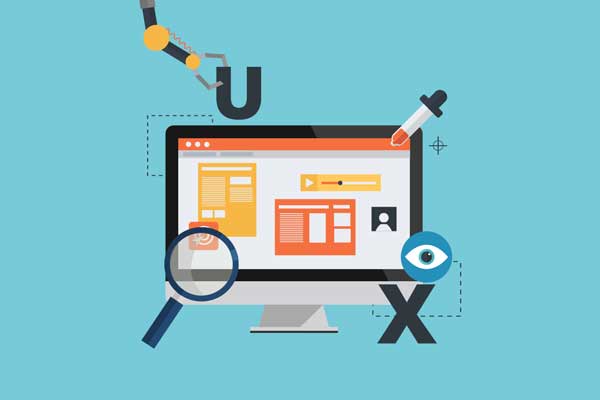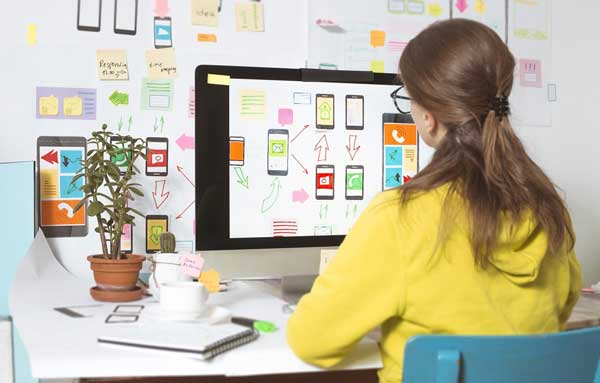logo design: A well-designed logo is a crucial element for any business, as it serves as a visual representation of the brand and helps create a strong identity.
In this comprehensive guide, we will explore the different types of professional logo designs, the pricing considerations, logo design services for various industries, the principles of logo, and common FAQs related to logo.

Types of Professional Logo Designs
Combined Logo
A combined logo incorporates both text and imagery to create a unique and memorable design. It often combines the company name or initials with a relevant symbol or icon. This type of logo design is versatile and can be used across different marketing materials.
Abstract Logo
An abstract logo uses geometric shapes, lines, and colors to create a visually appealing design that represents the essence of the brand. It is a non-literal representation of the business and allows for more creative interpretation.
Image Logo
An image logo focuses on a specific image or illustration that represents the brand. It can be a literal representation of the business or a symbol that embodies its values and personality. Image logos are often used by companies that want to create a strong visual association with their brand.
Typography Logo
A typography logo is primarily focused on the use of unique and creative typography to represent the brand. It relies on typography styles, custom lettering, and creative arrangements to create a visually striking logo.
Minimal Logo
A minimal logo design simplifies the visual elements and focuses on clean lines, negative space, and simplicity. It is often used to convey a sense of elegance, sophistication, and modernity.
Muscat Logo
A Muscat logo is a type of logo that combines the traditional Omani architecture and cultural motifs associated with the city of Muscat. It is suitable for businesses based in or related to Muscat and allows them to showcase their local identity.
Logo Design Price
The cost of a logo can vary depending on several factors, including the complexity of the design, the experience and expertise of the designer, and the specific requirements of the project. On average, a professional logo design can range from $500 to $5000 or more. It is important to invest in a high-quality logo as it is a long-term investment in building your brand identity.
Logo Design Services for All Types of Businesses
Sports Logo Design
Sports logo design services cater to sports teams, clubs, and organizations. These logos often incorporate elements related to the specific sport, such as athletic equipment, team mascots, or action poses. Sports logos should evoke a sense of energy, passion, and competitiveness.
Clothing Logo Design
Clothing logo design services specialize in creating logos for fashion brands, apparel companies, and clothing stores. These logos should reflect the brand’s style, target audience, and unique selling proposition. They often incorporate design elements that represent the fashion industry, such as clothing items, accessories, or fashion icons.
Commercial Logo Design
Commercial logo design services cater to businesses in various industries, including retail, hospitality, and services. These logos should be versatile and able to adapt to different marketing materials and mediums. They need to effectively communicate the brand’s values, products or services, and establish a strong visual identity.
Company Logo
Company logo design services are suitable for businesses of all sizes and across different industries. These logos should encompass the core values, mission, and vision of the company. They need to be memorable, scalable, and adaptable to different marketing channels.
Logo Design for a Beauty and Eyelash Salon
Logo design services for beauty and eyelash salons focus on creating logos that reflect the beauty, elegance, and professionalism of the salon. These logos often incorporate elements related to beauty, such as eyelashes, makeup brushes, or floral motifs. The color palette and typography should also align with the salon’s brand identity.
Real Estate Logo
Real estate logo design services cater to real estate agencies, property developers, and realtors. These logos should convey trust, credibility, and professionalism. They often incorporate design elements related to real estate, such as buildings, keys, or rooflines.
Principles of Logo Design
When designing a logo, it is important to consider the following principles:
1. Simplicity: A simple and clean design is more memorable and versatile.
2. Relevance: The logo should be relevant to the industry and target audience.
3. Memorability: A logo should be easily recognizable and leave a lasting impression.
4. Scalability: The logo should look good at different sizes, from small icons to large banners.
5. Timelessness: Aim for a design that will remain relevant and effective for years to come.
6. Consistency: The logo should be consistent with the overall brand identity and messaging.
Logo Design FAQs
Why do I need a logo?
A logo is essential for creating a strong brand identity and establishing a visual connection with your target audience. It helps differentiate your business from competitors and builds trust and recognition.
What’s included in a logo design package?
A logo design package typically includes multiple design concepts, revisions, and final files in various formats (such as high-resolution JPEG, PNG, and vector files). Some packages may also include brand guidelines or additional design collateral, such as business cards or social media graphics.
How long does it take to design a logo?
The time required to design a logo can vary depending on factors such as the complexity of the design, the number of revisions, and the designer’s workload. On average, the process can take anywhere from a few days to a few weeks.
Can I trademark my logo?
Yes, you can trademark your logo to protect it from being used by others. Consult with a legal professional or trademark specialist to understand the process and requirements for trademarking your logo.
Can I use clip art or pre-made templates for my logo?
While clip art and pre-made templates may seem like a convenient option, it is always recommended to invest in a custom logo design. Clip art and pre-made templates can lack originality and uniqueness, and may not effectively represent your brand’s identity.
How do I choose the right color palette for my logo?
Choosing the right color palette for your logo is crucial, as colors evoke emotions and can influence how your brand is perceived. Consider your brand’s personality, target audience, and industry when selecting colors. It’s also important to ensure that the chosen colors are compatible with various mediums and printing techniques.
Can I change my logo in the future?
While it’s possible to change your logo in the future, it’s important to establish a consistent brand identity. Changing your logo frequently can confuse your customers and dilute brand recognition. If you feel the need for a logo update, consider a refresh rather than a complete redesign.
Conclusion
Designing a professional logo is a critical step in building a strong brand identity. By understanding the different types of logo designs, considering pricing factors, and utilizing logo design services tailored to your industry, you can create a logo that effectively represents your brand. Remember to adhere to the principles of logo and explore common FAQs to ensure a successful logo design process.





